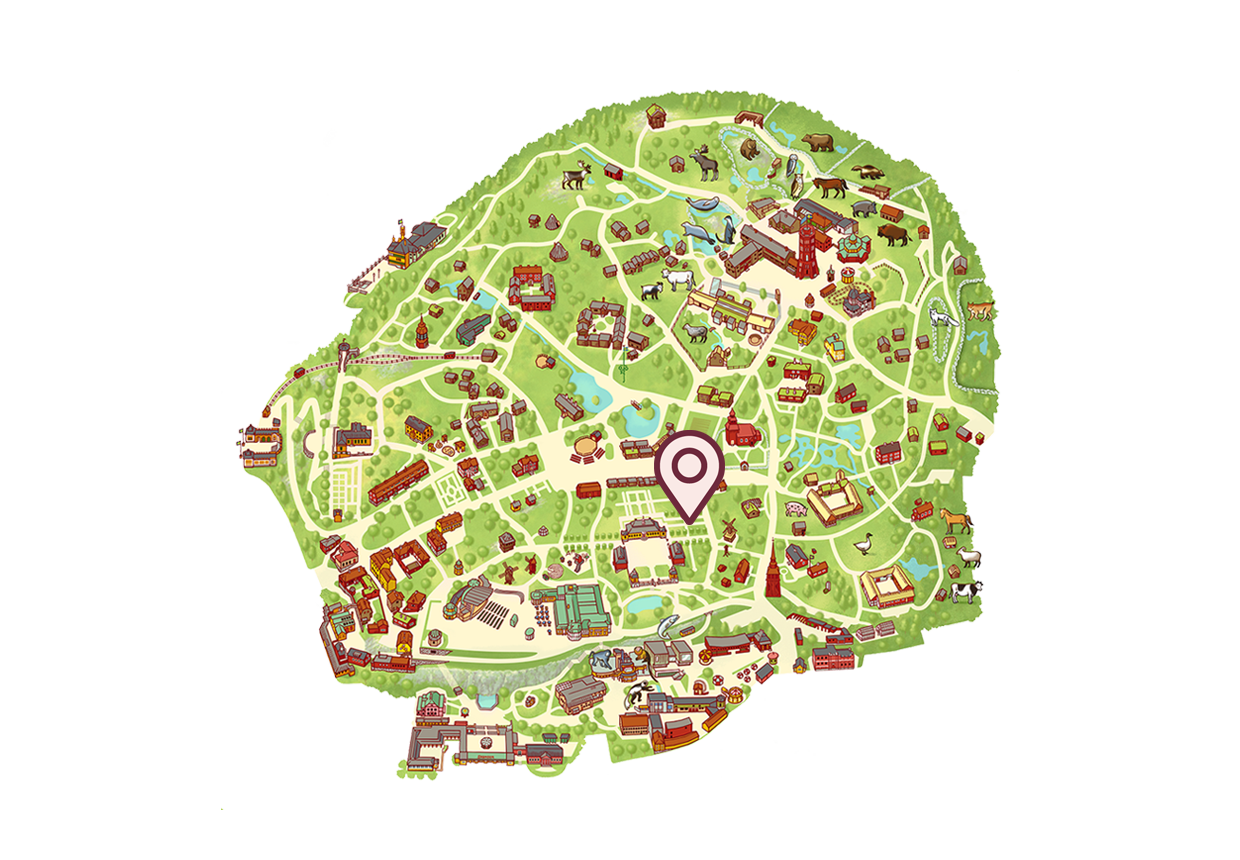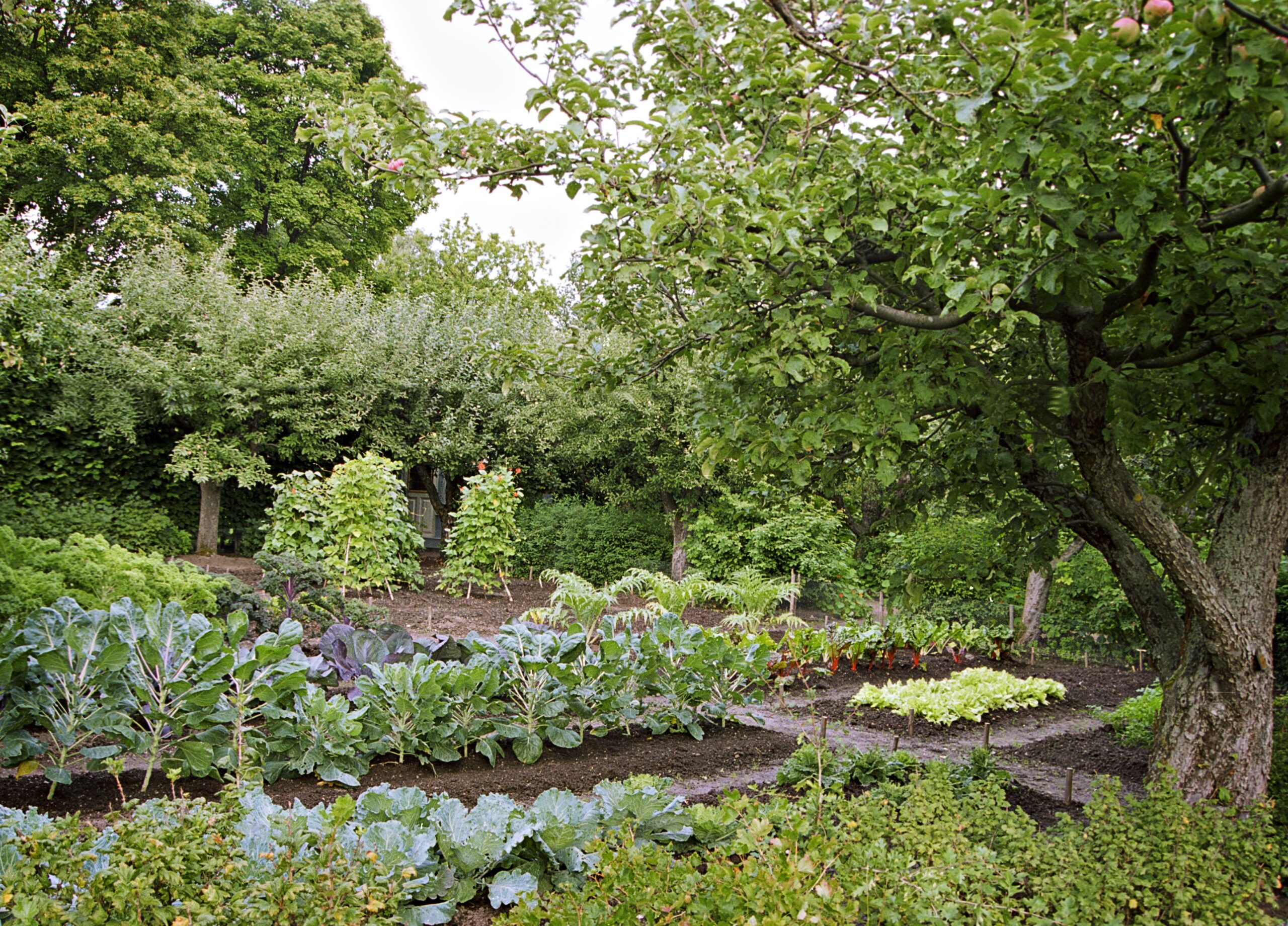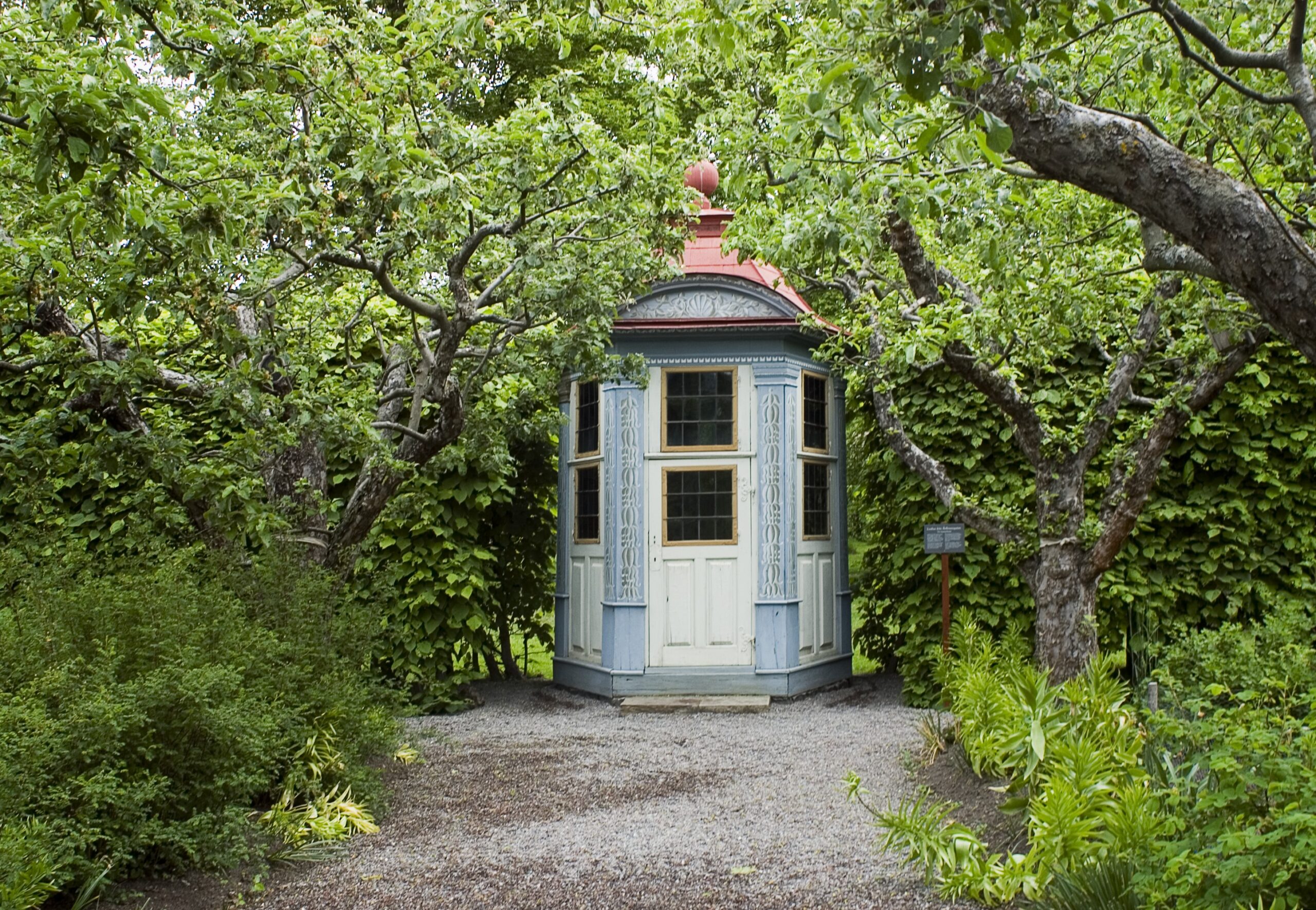From both the east and the west, avenues of lime tree lead to the main manor house. At the eastern end is the leafy kitchen garden, an important feature in recreating an 18th-century Swedish manor house with its various social classes.
The kitchen garden consists of two rectangular sections lined with fruit trees and berry bushes, with the section closest to the main building being divided into several beds. Cabbages, lettuces, legumes and root vegetables are grown here in a four-year rotation. The second section, on the other side of the central pathway, has a potato patch, a large bed of flowers and two beds of spices and herbs.
The kitchen garden is bordered to the north by a leafy pathway with trellised lime trees that form a beautiful arch. Beyond the arch is a grand summer house from the early 18th century that originally stood at Bellmansgatan 30 in Stockholm. Opposite the kitchen garden is a meadow where flowers such as cowslip and forget-me-not bloom in the spring.
At the rear of the manor house is the recreation garden, with its parterres modelled on a French Baroque garden. It consists of stone terraces with steps and four blocks of low, neatly-trimmed boxwood hedges. Neatly-trimmed linden hedges form a stately frame around the garden, and around several parts of the manor house.



